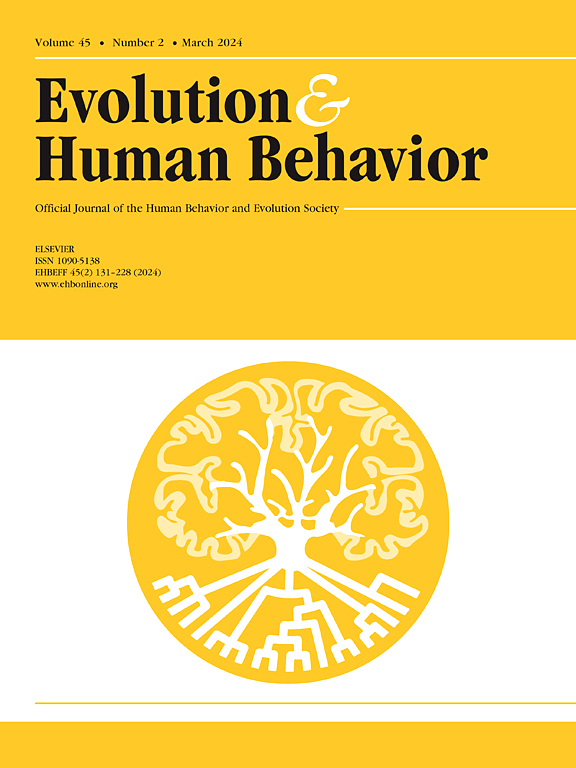面部指标的更新证据:面部宽高比和双颧宽度性别二态性的贝叶斯视角
IF 3.2
1区 心理学
Q1 BEHAVIORAL SCIENCES
引用次数: 0
摘要
面部宽高比(fWHR)是一个被广泛研究的形态学指标,它可能是由性选择形成的,并与广泛的感知和生理特征有关。支撑这些关联的前提是男性的fWHR更大,由于测量的变化,大样本量揭示了微小但显著的差异,以及缺乏对体型的控制,从经验上看,在文献中表现出混合和模棱两可的模式。在研究1中,我们使用了一个包含先验信息的贝叶斯层次模型,同时估计了五种测量类型中fWHR的性别二态性,并对体型进行了调整。虽然我们发现女性的fWHR更大,但将这种影响与图像捕获设置引起的fWHR变异性进行比较,并没有发现fWHR性别差异的有力证据。在研究2中,我们专门调查了面部宽度的性别差异(也根据体型进行了调整),再次结合先前的信息,证实了男性的面部宽度大于女性。这一领域的进展可以通过将焦点从像fWHR这样的任意比率转移到像面部宽度这样的直接测量上,以及仔细考虑现有关联的先前证据来实现。本文章由计算机程序翻译,如有差异,请以英文原文为准。
Updating evidence on facial metrics: A Bayesian perspective on sexual dimorphism in facial width-to-height ratio and bizygomatic width
Facial width-to-height ratio (fWHR) is an extensively studied morphological measure, which was presumably shaped by sexual selection and has been linked to a wide range of perceptual and physiological traits. Underpinning these associations is the premise that fWHR is larger in men, which empirically exhibits a mixed and equivocal pattern in the literature due to variation in measurement, large sample sizes revealing small but significant differences, and a lack of control of body size. In Study 1, in a sample of 1949 faces, we used a Bayesian hierarchical model that incorporates prior information to simultaneously estimate sexual dimorphism in fWHR, adjusted for body size, across five measurement types. While we found larger fWHR in women, comparing this effect to variability in fWHR due to image capture settings revealed no robust evidence of sex differences in fWHR. In Study 2, we investigated sex differences in facial width specifically (also adjusted for body size), again incorporating prior information, and confirmed men have greater face width than women. Advances in this area can be made by shifting focus away from arbitrary ratios like fWHR to direct measures like facial width – as well as carefully considering prior evidence of existing associations.
求助全文
通过发布文献求助,成功后即可免费获取论文全文。
去求助
来源期刊

Evolution and Human Behavior
生物-行为科学
CiteScore
8.30
自引率
9.80%
发文量
62
审稿时长
82 days
期刊介绍:
Evolution and Human Behavior is an interdisciplinary journal, presenting research reports and theory in which evolutionary perspectives are brought to bear on the study of human behavior. It is primarily a scientific journal, but submissions from scholars in the humanities are also encouraged. Papers reporting on theoretical and empirical work on other species will be welcome if their relevance to the human animal is apparent.
 求助内容:
求助内容: 应助结果提醒方式:
应助结果提醒方式:


